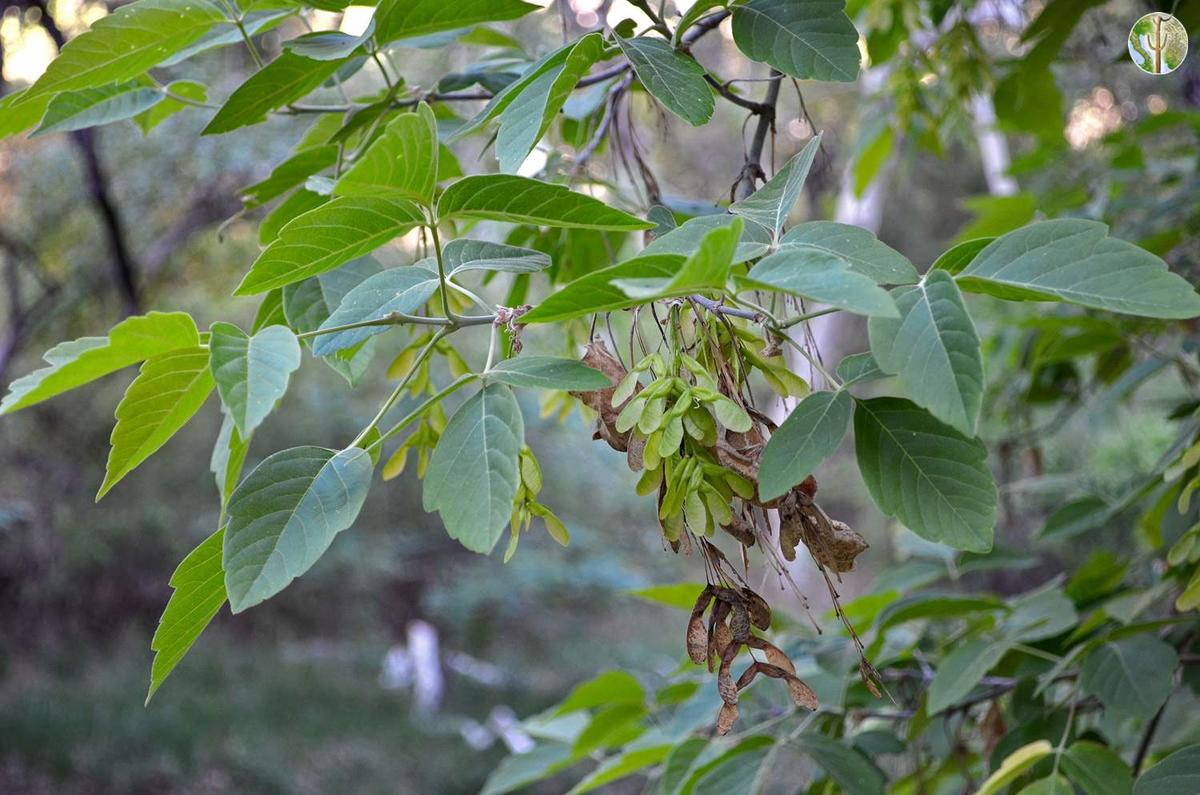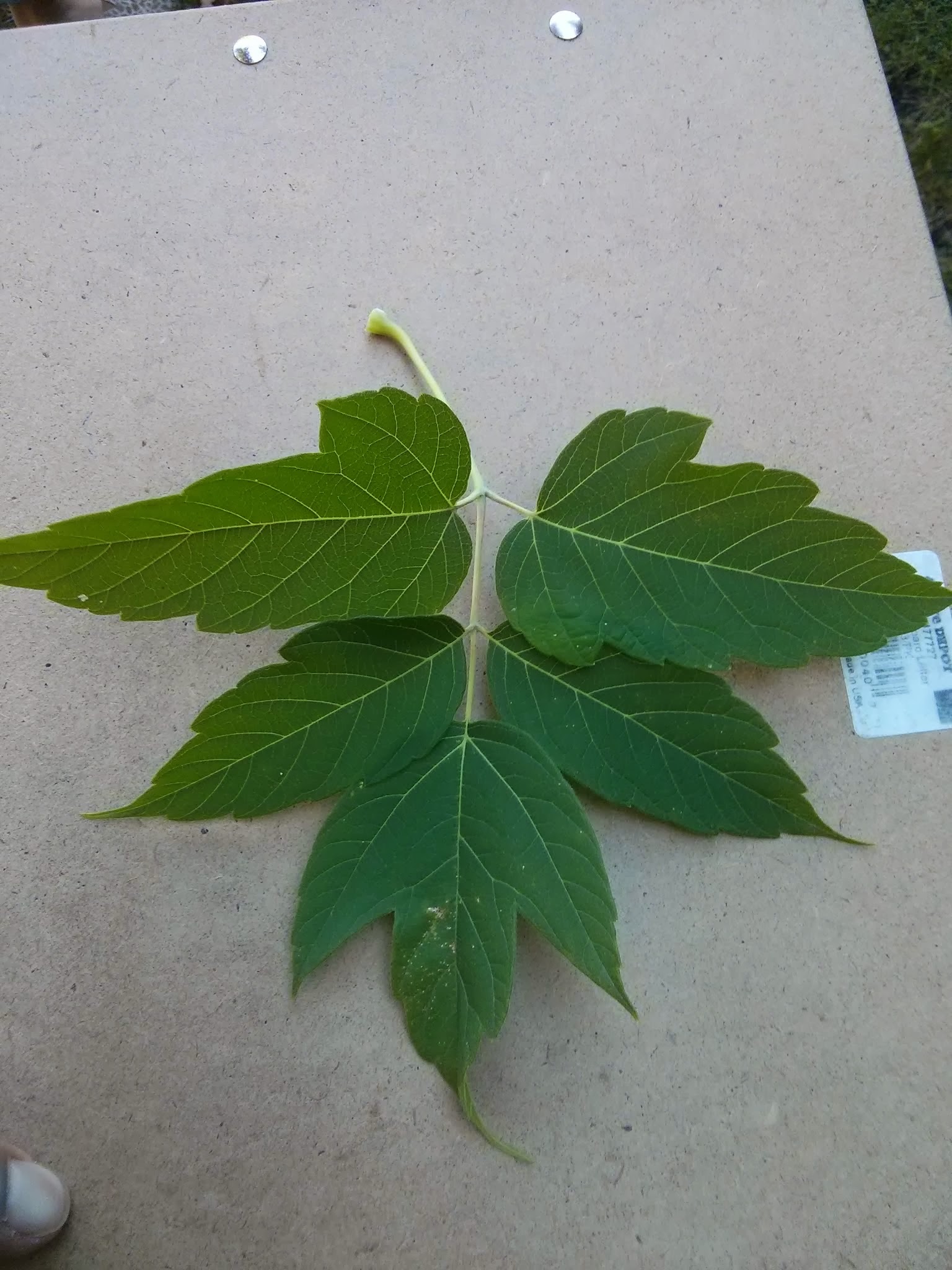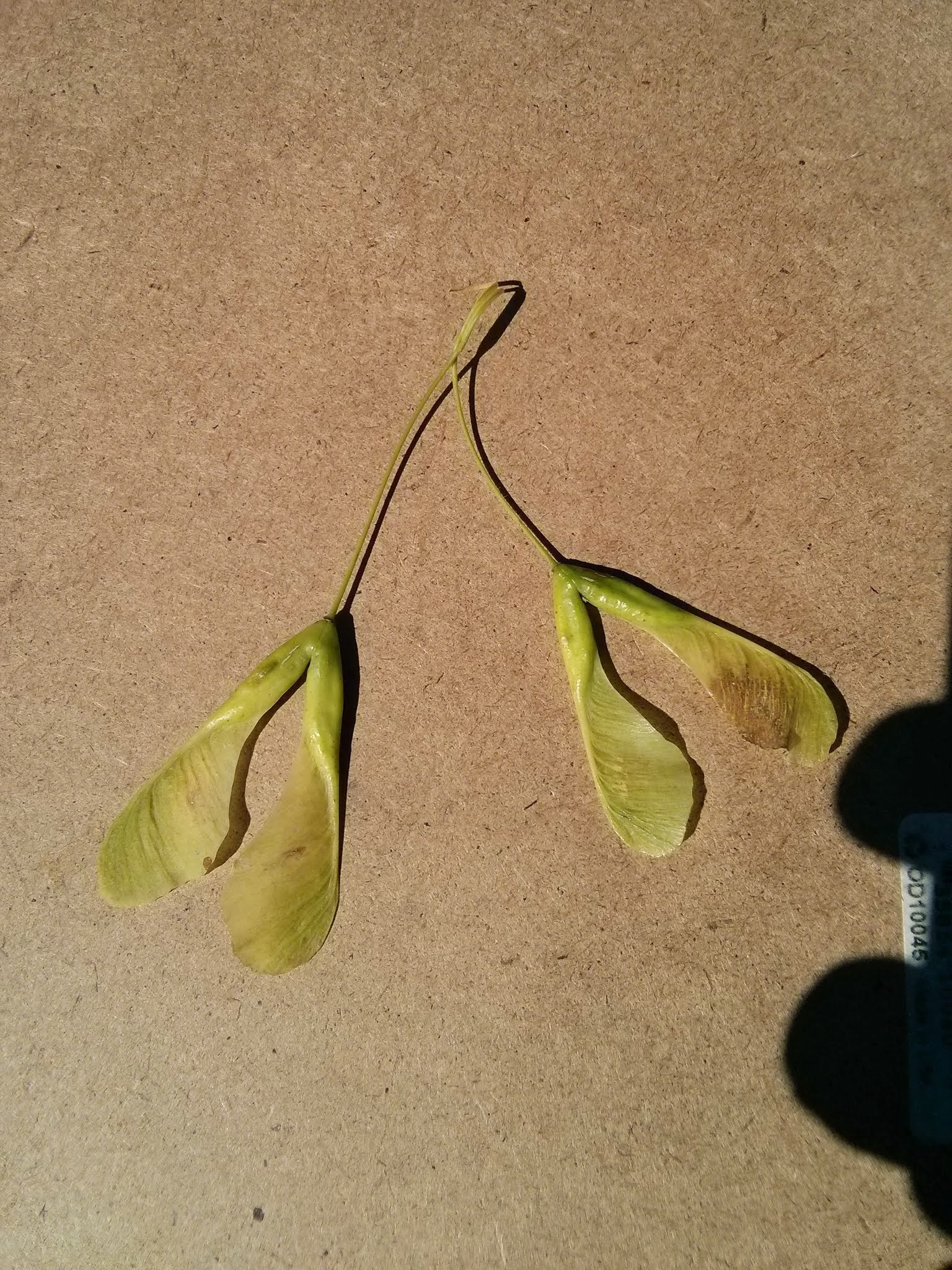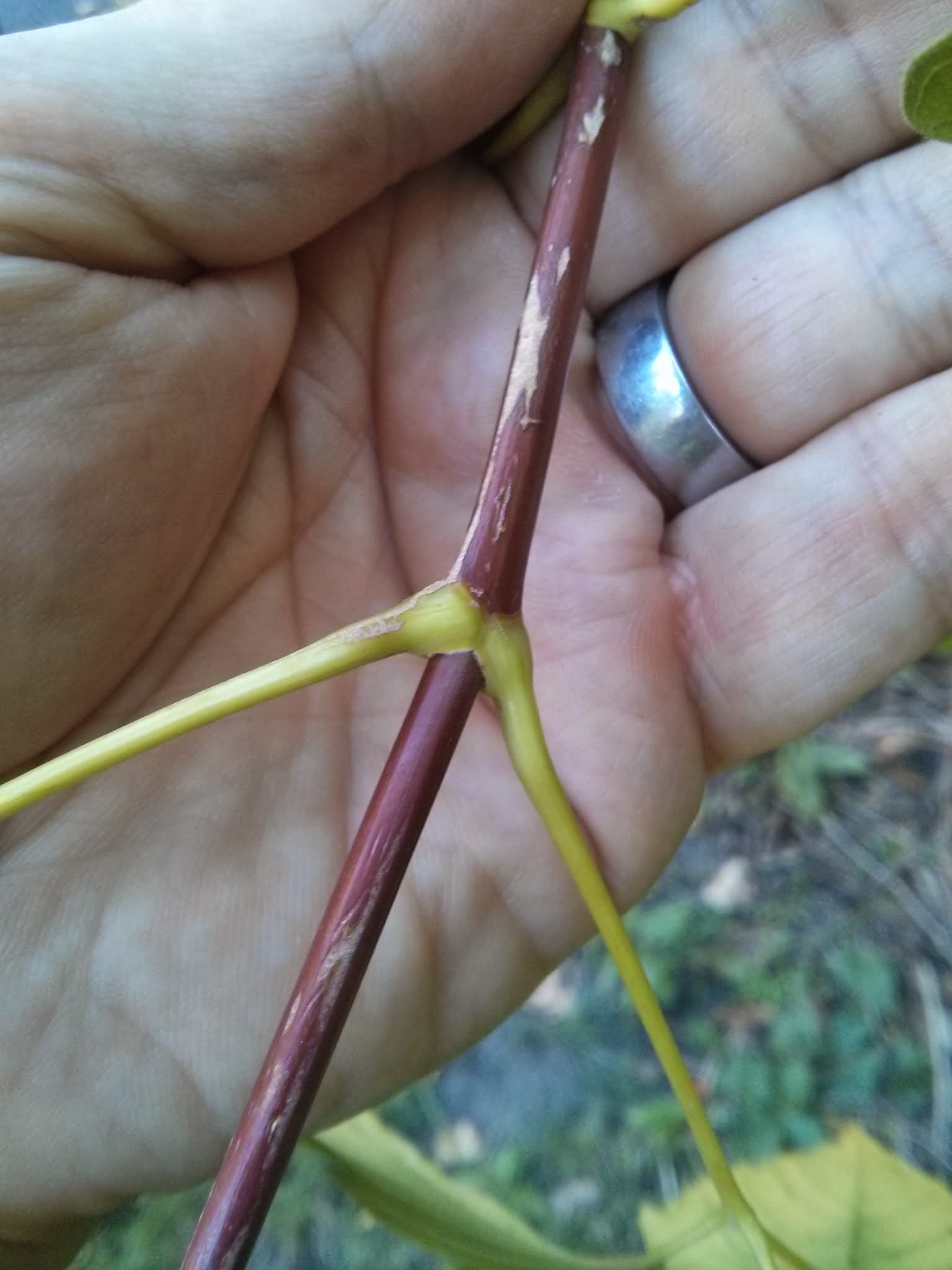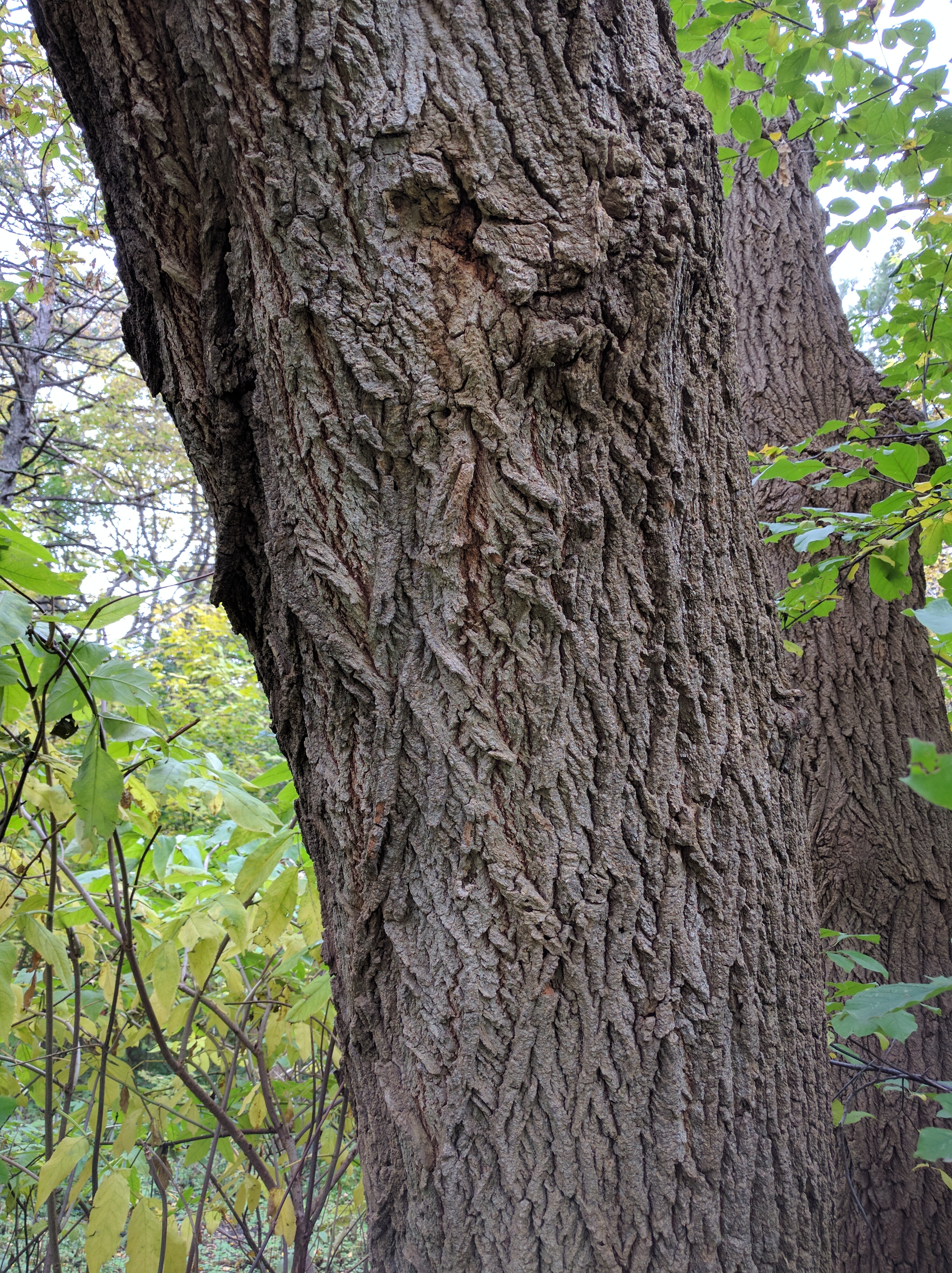Common Name: boxelder
Scientific Name:
Family: Sapindaceae
Genus: Acer
Species: A. negundo
Hardiness Zone: 2 to 10
Height: 30 to 50 ft
Width: 30 to 50 ft
Common Characteristics:
The boxelder is actually a maple tree. They are easily distinguished from other maples because of their leaf composition and being dioecious species. This native tree is very cold hardy and is fast-growing but also short living. The leaves are opposite and pinnately compound with 3 to 7 leaflets that are slightly lobed, having anywhere from 1 to 3 shallow lobes per leaflet. The foliage can be ovate or elliptical in shape. They are a light green above and slightly paler and sometimes fuzzy underneath. In the fall, the foliage turns yellow. The bark on the boxelder is light gray-brown and has many narrow fissures and ridges, becoming deeply furrowed with age. The twigs are often a green or purplish color to them and have a waxy coating that can be rubbed off. The fuzzy white buds on the boxelder can be found encapsulated underneath the petiole of the leaves. The fruit on the tree is winged samaras that are paired that are very close together, creating a V-shape. The seeds mature in the summer and can be found still attached to the tree in the winter.
Where it Grows:
Boxelder can be found anywhere in Minnesota but it prefers sites on river banks and lakeside that have wet or moist soil. It can also be found growing in valleys in hardwood forests. They prefer full sun and are intolerant of full shade areas. Boxelder will tolerate the poorest conditions that the urban environment can throw at them. If there is an unusually hard spot to get any other tree established, it is likely to find this tree growing there.
How it's Used:
Boxelder is sometimes used for creating barrels or crates. The indigenous people that lived in the plains states made sugar from the sap. It can be used as a shade tree in landscapes where it is difficult for other shade or ornamental trees to grow.
Ecosystem Services:
Boxelder provides food and shelter to browsers, insect pollinators, seed-eating birds, and small mammals. It also is a host tree for boxelder bugs.
Where it is Native To:
Boxelder's native range is common and widely distributed throughout the continental United States.
Problems:
Unfortunately, they have weak wood and are prone to decay and stem breaking from storm damage. These trees are mostly seen as a nuisance due to the excessive amount of seeds produced and their aggressive weedy growing. They are also the host tree for boxelder bugs, which do not hurt the tree but can be a nuisance near homes.
References:
Little, E. L. (n.d.). National Audubon Society Field Guide to North American Trees; Eastern Edition. (Original work published 1980)
